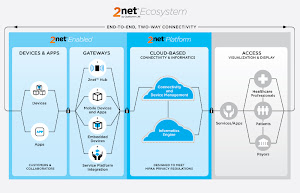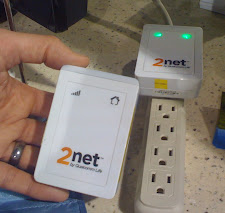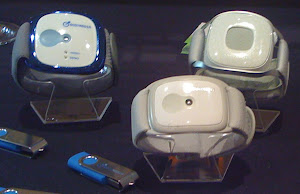The first consumer-focused M2M (machine-to-machine) ecosystem is on the market. Qualcomm launched its Qualcomm Life subsidiary last month, folding in its wireless health business. QL’s flagship offering is the 2net platform, a medical-grade (it meets HIPAA standards and is FDA listed) cloud server that links personal health and fitness monitoring devices to medical professionals and, when appropriate, directly to consumers.
Qualcomm is building and managing the network and cloud computing infrastructure. The health and fitness monitoring devices on one end and the interface with health care providers and consumers on the other are provided by Qualcomm’s customers. Forty companies signed up in 2net’s first month, and the list can be expected to grow quickly.
2net partners feed data to the platform any way they choose, but it’s clearly built on the assumption that most personal medical monitoring devices will be wireless. It makes sense. The more data, the better, and what could be better than continuous readings from a mobile monitor?
Not surprisingly, Qualcomm is making sure the platform is fully enabled with mobile data links. It’s supporting smartphone developers, such as Macaw, that are building apps that directly assess fitness activities (for example, via GPS tools) or that link to a wide range of sensors, from Bluetooth-enabled bathroom scales to blood pressure cuffs to blood glucose meters.
Medical and fitness monitoring devices can also link to 2net via Ethernet (for, say, a home respirator) or an embedded M2M cellular radio or directly from a proprietary platform. To jumpstart the market, Qualcomm Life is producing a wireless Swiss Army knife gateway with a plug form factor. It supports Bluetooth, WiFi, ANT+ and a UMTS radio that’s backwards compatible to 2G. First and foremost, QL wants to drive the 2net platform. GSM or CDMA, it doesn’t matter: Qualcomm is happy to support it.
Partner companies are already leveraging the gateway device. BodyMedia makes a fitness monitor that takes galvanic skin response, heat flux and skin temperature measurements, and combines it with accelerometer readings to send real time fitness information back to a subscriber’s smartphone.
QL makes money by running the platform. Parent Qualcomm will make a ton of dough as M2M drives mobile subscriptions from 6 billion today to a projected 50 billion by 2020 (that’s not a typo, it’s billion with a B).
Partners make money by manufacturing health and fitness gizmos, selling them to consumers and then, in many cases, charging an ongoing subscription fee to crunch the data and send it to their physicians and other health care providers. You can bet the ranch that health insurance companies will push the technology and buy OEM services for their customers.
Qualcomm is supporting the medical M2M sector with a $100 million venture fund and its just announced $10 million Qualcomm Tricorder X Prize. “The mission is to drive radical breakthroughs for the benefit of humanity,” said Dr. Peter Diamandis, CEO of the X Prize Foundation, as he joined with Qualcomm CEO Paul Jacobs to announce the competition at the 2012 Consumer Electronics Show.
They should have called it the “Medical Tricorder X Prize”, because every Trekkie knows that Dr. McCoy’s Tricorder was different from the general purpose units the rest of the Enterprise’s crew carried.
Okay, for 10 million bucks, we’ll cut them some slack.
M2M is about machines. But as Mr. Spock observed, machines are merely servants of people. Qualcomm could have picked no better way to pioneer the consumer M2M space than by putting human health first.





